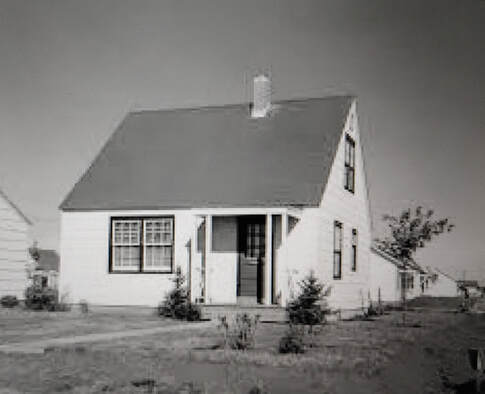Cubbyhole
 Have you ever heard of a cubbyhole? There was a cubbyhole, a word used by my parents, in my bedroom in the war time house in which I grew up.
Have you ever heard of a cubbyhole? There was a cubbyhole, a word used by my parents, in my bedroom in the war time house in which I grew up.My home looked almost exactly like the one in the photo. These war time houses were built quickly and cheaply to provide housing for service personnel returning to Canada after World War Two.
To enter the cubbyhole, I opened a four-foot high door in the wall at the end of my bed and crawled into a narrow space between the bedroom wall and the sloping roof. Sort of like an attic behind the wall rather than an attic above the ceiling. Imagine a triangular-shaped crawl space just above the front windows of the home in the photo.
My parents stored stuff in the cubbyhole—suitcases, a trunk, Christmas décor, boxes full of family memorabilia including my Dad’s air force uniform. My parents did not forbid me to go into the cubbyhole but they didn’t exactly encourage it either. I spent many nights in there as a child with a flashlight looking at things when I was supposed to be in bed.
The word cubbyhole (a small, enclosed space) appears in English in 1825, possibly from cub, a related Low German word from the 1540s meaning a stall, pen, cattle shed, hutch. In the 1650s, a cuddy was a small cabin in a boat, perhaps from Dutch kajuit or French cahute. Another suggestion is that cubbyhole comes from cuddy, a word from 1793 (a small room, cupboard). In brief, the origins of the word cubbyhole are uncertain.
In some countries and US states, the glove compartment in a vehicle is called a cubbyhole. In a kindergarten or daycare centre, a cubbyhole is often the place where kids can keep their belongings. Cubbyhole is a well-known nightclub and hangout in New York City.
Image: War time home: Saskatchewan Council for Archives and Archivists
Reference: Online Etymological Dictionary, https://www.etymonline.com/
Published on January 05, 2024 17:52
No comments have been added yet.



